August 2, 2014, Covington County, AL
- 1 of 2
- next ›
This month the group went to a shallow river in Covington Co, AL we haven't visited for a long time. Our memory of this site is that the pickings were better in years past. It took a while to find fossils. We don't dig, as the landowner has requested "no digging", but most of our honey holes were empty, possibly from the recent rainy seasons or over-collecting by commercial collectors. Whatever the reason, everyone left with a small handful of shark teeth, and we had a great day visiting and keeping cool in the river. Jan and Lea decided to arrive at the site via kayak, making for an interesting upriver paddle.
Our annual trip to Butler County turned up several shark teeth, fish vertebra, ray teeth, turritella in cochina, and a number of pottery pieces. The day was spent roaming the creek, playing in the sand and creek, or just hanging out sunbathing. Several members camped out for the weekend on the bald, where more fossils were found.
This month the group traveled to Butler County, Alabama, to a sandy creek which runs through early Tertiary and late Cretaceous material. The weather was overcast on Saturday, making collecting very pleasant. A number of members camped out for the weekend. Sunday the sun was out, and it made us grateful for the cloud cover on Saturday!
The sandy beaches and gravel areas yielded up shark teeth, ray teeth, some nautiloid sections, and recent mammal material which was sometimes as fasinating as the fossils.
We had quite a few young people on the trip who enjoyed both the fossil collecting and swimming, splashing and running in the shallow creek. There is an area of soft clay, and some enterprising young men fashioned bowls from it.
More about the artifacts found on the trip.
--Photos courtesy Claire Smith and Vicki Lais.
Some tiny gastropods found on the flat limestone "bald", and an unkown black item with serated edges.
This nice gastropod was found at this site several years ago, and was brought to the trip to display.
Coquina, a very hard "stone" composed of compressed shells, used in many parts of Florida as building stone.
Hanging out on the large sandy beach. This is like a crossroads, everyone passes this way, or returns here to rest.
Making ones way up the creek took a very long time. First you have to play in the water, feel the sand between your toes. Then you have to stop at every gravel bar and see what's there. It takes most people hours to get less than 1/4 mile.
Various items found, including cochina, shark teeth, ray teeth, pottery, echinoid
Unlike previous years, we were the only collectors that day. It appeared that some "cleanup" work had been done along the riverbank, because it was smooth and un-marred by the holes and trenches dug by commercial collectors in previous years. The landowner asked that we DO NOT DIG at this site, and hopefully, the word has gotten around (BPS never dug here, anyhow). Screening is ok, but NOT digging holes in the banks. Since a number of our members have been appalled in the past at what appeared to be irresponsible digging by people who didn't even know they needed permission to collect here, this was welcome news.
We found ray teeth, shark teeth, sting-ray spines, brachiopods, drumfish mouth plates, and some mystery pieces. Stay tuned! The river was a wonderful place to cool off on such a hot day, so BPSer's took full advantage. Several members camped out overnight (thanks for the A/C, Leisa!), and broke out the canoes the next day in hopes of spotting some more collecting areas. We found some shark and ray teeth, a live turtle badly wanting out of the hole it had fallen into, and had a very pleasant trip UP the river, but did not find the treasure hole we were seeking. So, obviously, we have to go hunting again, right guys?
(Photos courtesy Claire Smith and Vicki Lais)
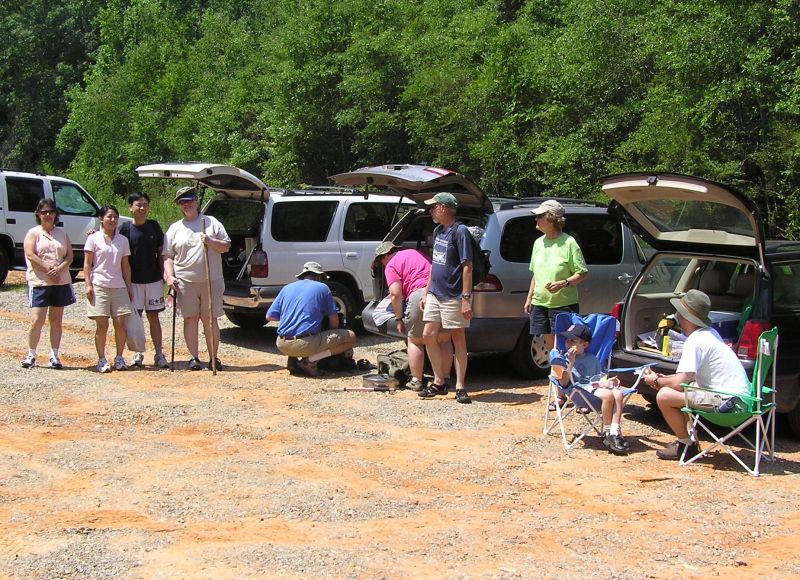
The group picture, hey, what can I say? We were late, hot, and hungry!

Very low water level today.

Members hunting for the best collecting spots - the river is quite shallow here.

Jan found several pieces of petrified/ permineralized wood, and what appears to be a nice seed pod.
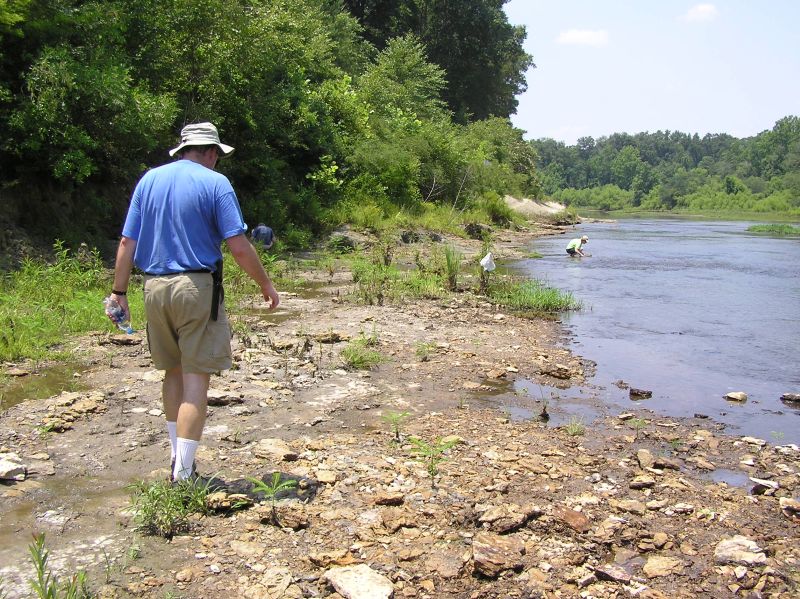
Jan heading downstream, surveying areas that are normally covered with water.
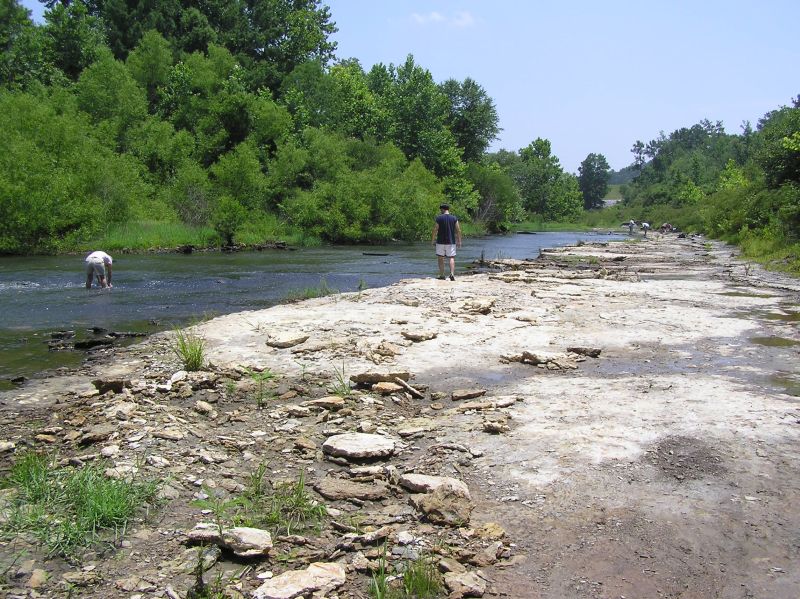
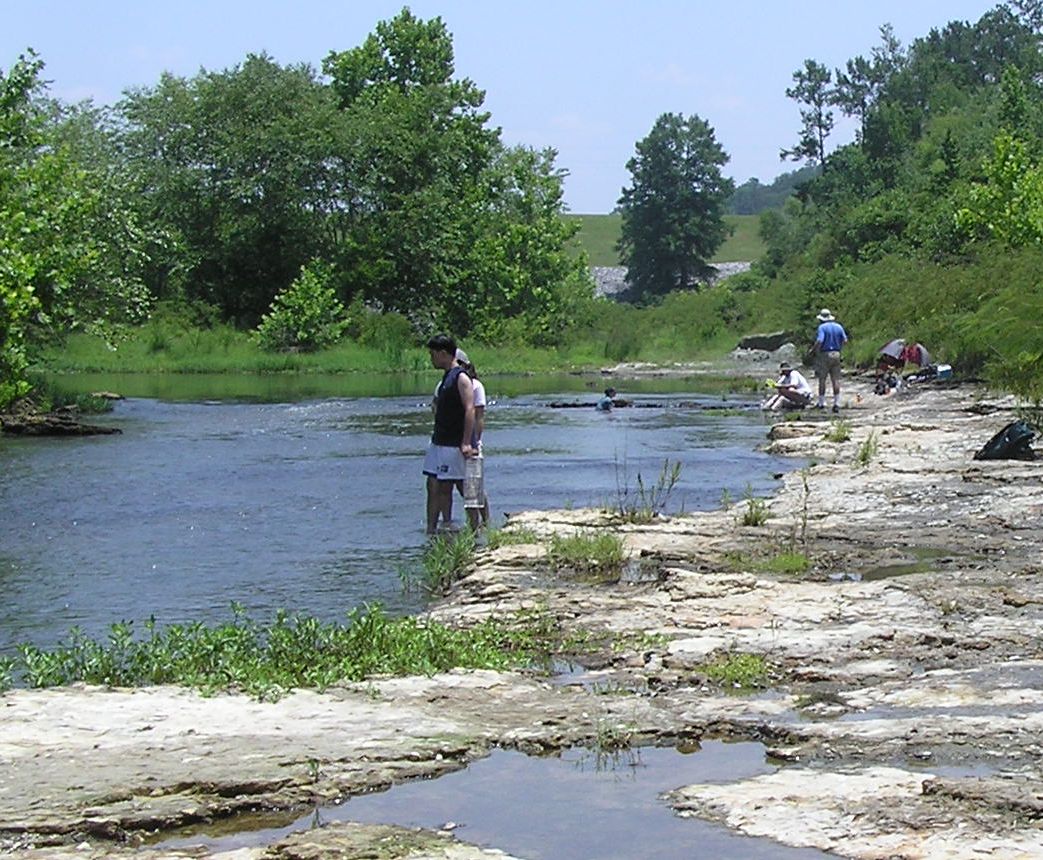

Sample of the fossils found at this site.

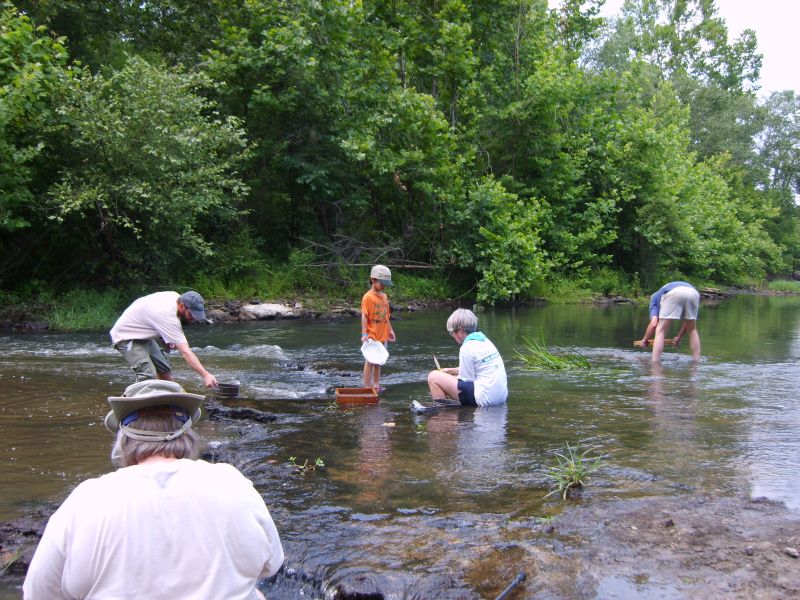


Drumfish mouth plate.
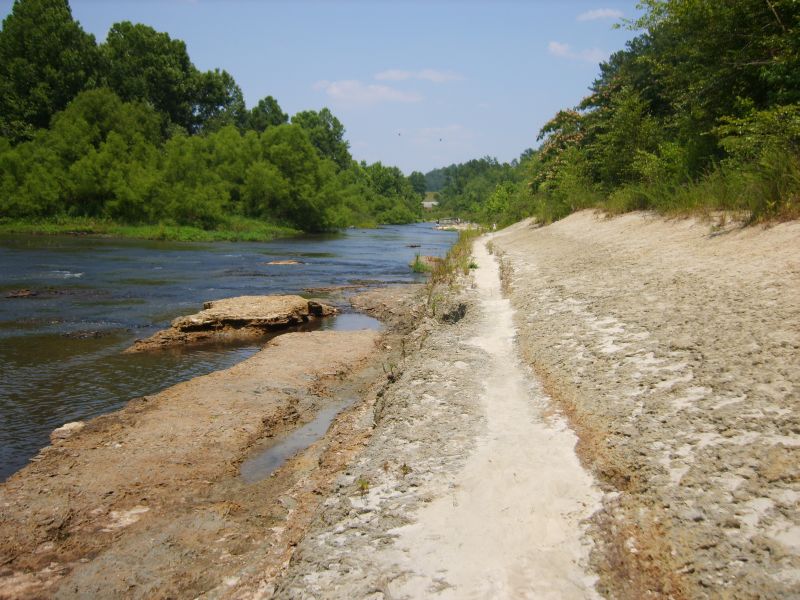

The river is low enough to expose this small waterfall, where, rumor has it, Claire and Becky engaged in a water battle.



Good view of the seed found by Jan.
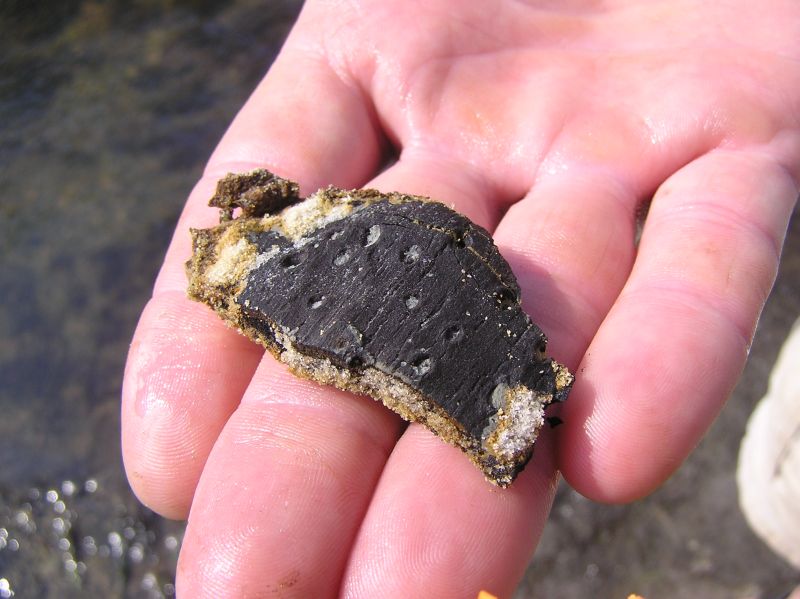
Wood found by Jan.
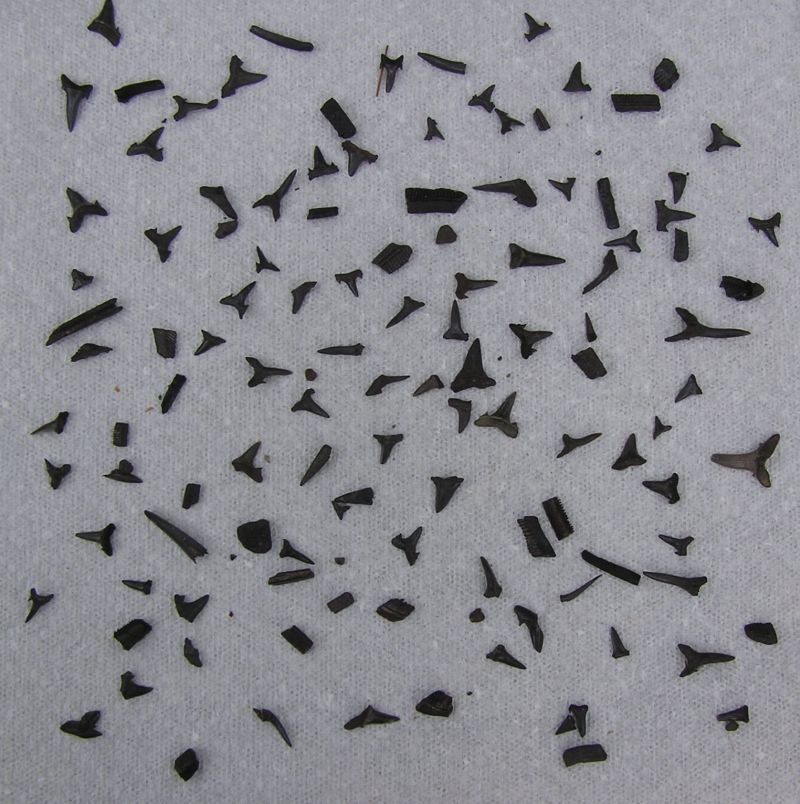
That evening at camp, we spread out our finds for the day.






Everyone met at a central location, and a brief introduction to the geology of the area was given before driving about 12 more miles to the entrance to the site. While past trips to this location have found the entrance roads to be very slick from rain, this years access was dry and easy. The entire caravan was able to drive to the limestone hilltop parking area.
The fossil hunting started the moment you exited your car with small gastropods and segments of large ammonites being found on the cleared hill top. The trail down to the creek provided more ammonites.
The creek was beautiful with white quartz sand beaches at many of the bends. Shark teeth, ray teeth, fossil bone, ammonite pieces and nautiloids were found in the gravel bars, along with numerous non-fossilized bones and teeth from various mammals. Some of the more interesting finds were various human artifacts rather than fossils. Indian potshards, some with incised decorations, a couple of projectile points and an Indian pipe, probably of European origin, were found.
The end of the day found the diehard fossil hunters resting at the beach where the trail intersected the creek. The Novaks organized a fire on the beach to roast small sausages, while others brought snacks to contribute, and the Stewarts returned to the parking area to set up camp for the night and fix their dinner.
By dark, everyone headed home, leaving Pam and Bob to enjoy a pleasant night at the site with owls hooting and Whip-poor-wills calling. At daybreak turkeys could be heard at the tree line adjacent to the camp area. After a couple of hours of walking the creek on Sunday morning the Stewarts packed up and reluctantly left the site, letting it return to nature.
(Photos courtesy Jan Novak, Bob Stewart, Becky Guthrie, and Vicki Lais)
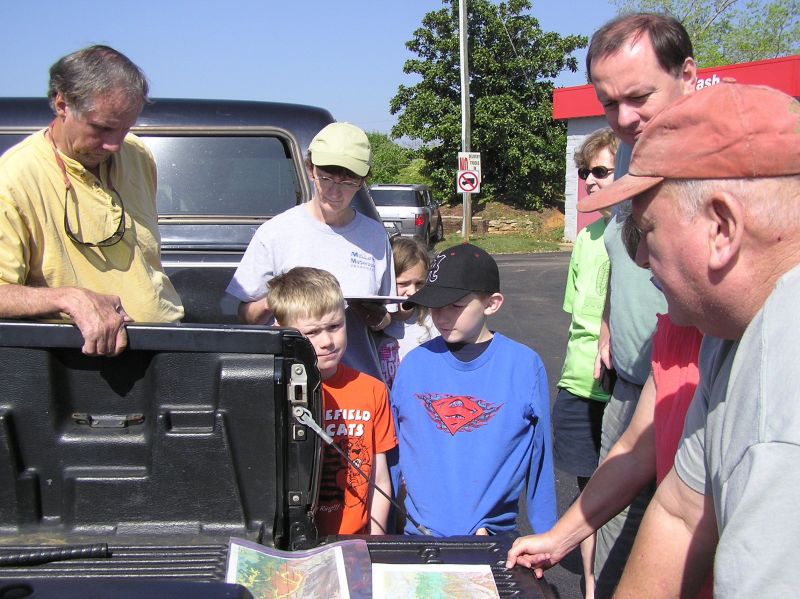
Vice President Greg gives an overview of the geology of the site and collecting rules.

A lot of excited people showed up for the field trip - fossils can even be found on the limestone earth in the foreground.

If you look carefully, you can spot tiny round gastropods, each approximately 3/8 inch across.
Hiking down to the creek from the parking area (and of course, looking for fossils along the way!)

The creek was higher this year than normal, but there were still numerous gravel bars.

A recent storm had washed up a huge pile of brush and trees, and left behind rocky rubble and mud rather than the white sand we normally find.


Nice nautiloid found by David.


Ray tooth and shark tooth.
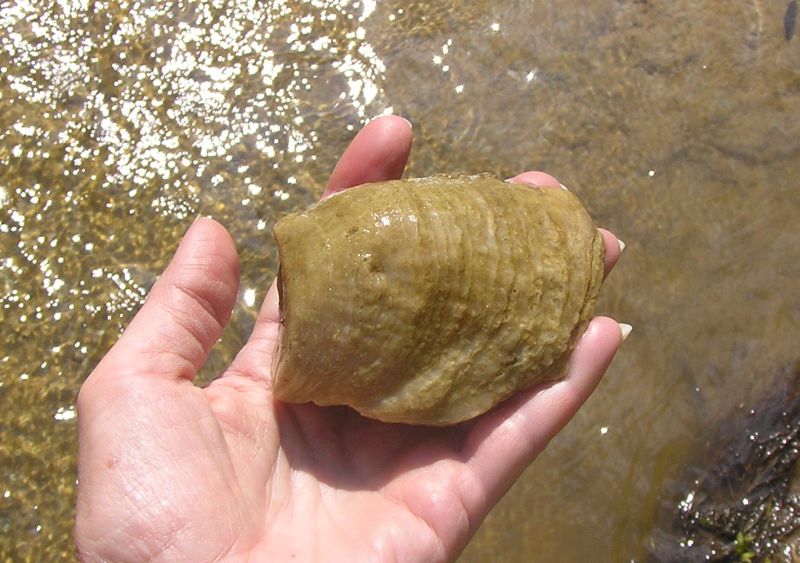

Unknown item, can anyone identify? Looks kind of like a tooth. . . .but . . . .

Nice turritella in coquina.
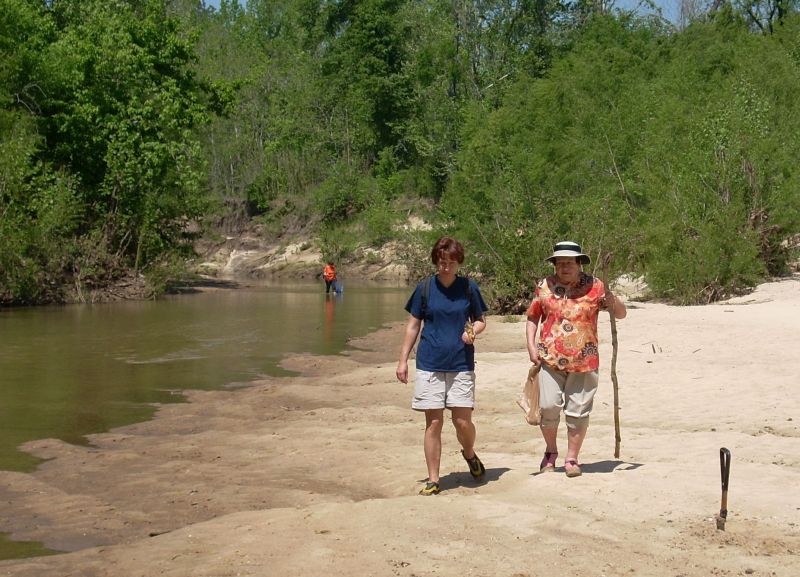
Lea's mom was visiting from the Czech Republic, and decided to join us for the fun!

Shells in matrix.

Probably a pottery handle.
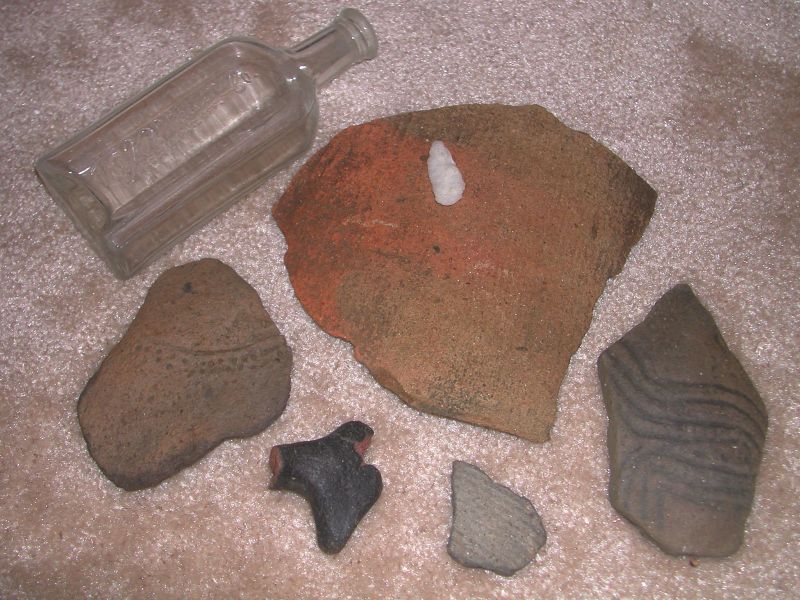




Worm tracks in the sand. Fossil worm tracks much like these are found in shale in north Alabama.


Numerous clayballs were found in the creek. This one shows bits and pieces of plant debris. The finder did not examine it closely to determine whether these were fossil leaves or recent, however, based on the geology of the area, they could easily be cretaceous fossil remains.


While Bob & Pam set their tent up . . .
The others built a fire and enjoyed the evening.

The campfire has about died out as some of the diehard fossil hounds hang out wringing that last little bit of enjoyment from the day!